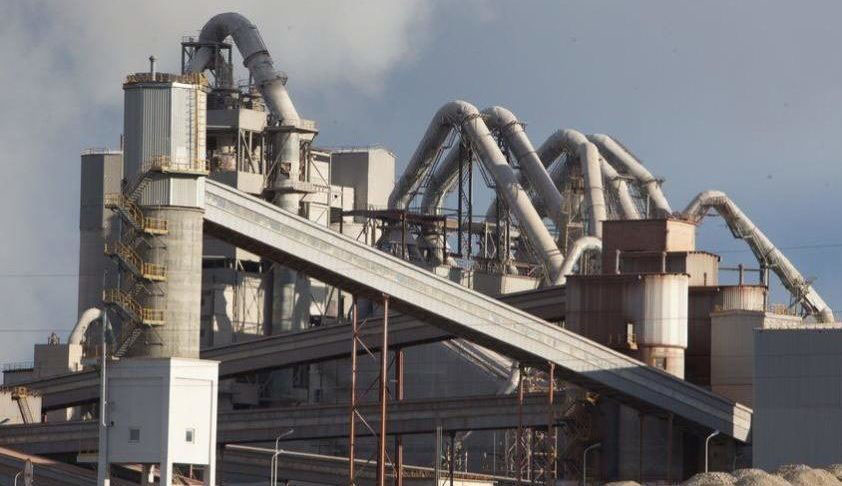While there are currently no cement manufacturing operations in Guyana due to the high cost of energy and other barriers, the imminent Gas-to-Power Project could soon change the economics for the country in this regard. This is according to ExxonMobil’s Comprehensive Waste Management Plan (CWMP).
That document outlines the brief efforts of some actors to have cement manufacturing in Guyana since all cement is imported in bulk, therefore, driving up costs in the construction industry.
The report which is in the possession of the Environmental Protection Agency (EPA) states that, historically, a cement manufacturing operation was started up in December 2014 but ceased operations in October 2017.
Then as recently as January 2019, it was noted that a new concrete mixing plant was commissioned by TCL Guyana/CEMEX, but this new plant relies on imported cement manufactured abroad. At the press conference announcing the new concrete plant, Guyana’s Minister of Finance at the time, Winston Jordan, and the Guyana Manufacturing and Services Association, had urged TCL Guyana/CEMEX to explore the idea of manufacturing cement in Guyana given the future growth potential for construction in Guyana.
Currently, the document notes that the largest barriers to the establishment of cement manufacturing in Guyana are lack of primary raw materials (limestone) and the high cost of energy, as cement manufacturing requires a high energy input. It goes on to state that there are no extensive limestone deposits located in northern Guyana, so all bulk limestone materials would have to be imported from the Caribbean Region. Furthermore, there is currently no reliable low-cost energy available to support cement manufacturing. Consequently, under the current scenario, cement manufacturing in Guyana does not appear feasible.
Be that as it may, the document states, “the proposed Gas-to-Power Project offers up the potential to change cement manufacturing economics in Guyana. It is possible that low-cost energy resulting from the proposed Gas-to-Power Project could off-set the high costs of importing raw materials from the distant Caribbean Region. This could make the prospect of cement manufacturing in Guyana more feasible.”
It was noted however that the overall feasibility of such an endeavor would require a detailed economic analysis as well as the interest of a multinational cement manufacturer.
Exxon in its document stated that any future cement manufacturing planning efforts should consider provisions for waste co-processing and the use of alternative fuels and raw materials.
OilNOW understands that the oil and gas development and production wastes best suited for treatment in cement co-processing include all drill cuttings (alternative raw material), oily sludges, oily rags, contaminated packaging, and other hydrocarbon wastes (alternative fuels). The primary benefits of the use of cement co-processing for treatment of these wastes are reliable and effective treatment of hydrocarbon based hazardous wastes; the elimination of all landfill disposal of residual wastes; and more consistent treatment of waste.
The Comprehensive Waste Management Plan (CWMP) is a cradle to grave document based on a holistic review of Exxon’s affiliate, Esso Exploration and Production Guyana Limited’s (EEPGL) maturing waste management process first developed in 2015 for EEPGL’s first discovery well.
The CWMP was developed pursuant to Section 5 of the Payara Development Project Environmental Permit (#20181204-PPOIX) and the Cradle to Grave Waste Analysis Study approved by the Environmental Protection Agency on September 13, 2021.
The plan is intended to accommodate all projects in Guyana associated with EEPGL’s exploration and appraisal drilling, development drilling, installation and hook-up, commissioning and start up, office construction, production operations, and related activities.
Furthermore, the plan is inclusive of the Liza Phase 1 Development Project, Liza Phase 2 Development Project, Payara Development Project, Guyana Fiber Optic Cable, and EEPGL’s Guyana Office Complex Project (GOCP), as well as permitted or planned drilling projects.
In addition, the plan makes provision for projects currently under review by the EPA, including Yellowtail and Gas-to-Energy. As new projects are planned or come on stream, Exxon said the plan will be updated to address them.
Once approved, the plan is expected to replace and supersede previous Waste Management Plans incorporated in approved Environmental Impact Statements and permits.





